Up Next
How Brazilian Artist Sallisa Rosa Is Shaping an ‘Archaeology for the Future’ in Clay
The Rio de Janeiro-based artist's ceramic installation 'Topography of Memory' debuts in Miami Beach this week.
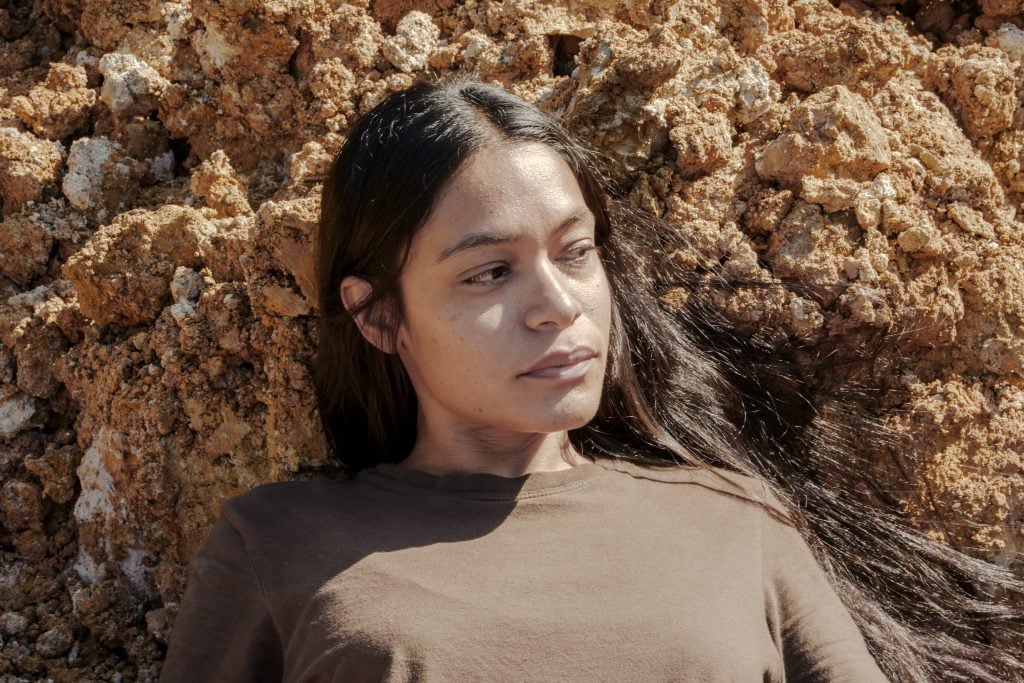
The Rio de Janeiro-based artist's ceramic installation 'Topography of Memory' debuts in Miami Beach this week.

Katie White

What is the shape of memory? Is it a vessel, filled to the brim, leaking histories while constantly replenished? Or is it ether, like smoke or perfume, wafting and blooming, dispersing and lingering in the air we breathe? Or is memory a landscape felt out blindly, groped and grasped in darkness?

Sallisa Rosa’s installation Topography of Memory is one of the 2023 art commissions by Audemars Piguet Contemporary. Courtesy of the artist and Audemars Piguet.
Brazilian artist Sallisa Rosa (b. 1986) centers her oeuvre on such questions of memory and collective history. Known for her large-scale installations, the artist considers how the natural world shapes and carries our heritages, even in urban environments. Over the past few years, the Goiás-born, Rio de Janeiro-based artist has quickly garnered critical attention.
A self-taught artist, Rosa exhibited her first work after answering an open call at a museum in Rio. By 2021, she had opened her first solo exhibition at Museu de Arte Moderna in Rio de Janeiro in 2021. Her works have also been included in group shows at SNAP, Shanghai, Théâtre de L’Usine, Geneva, and the Royal Academy of Arts, London. Currently, the artist is in Amsterdam attending the Rijksakademie artist residency, a two-year residency (“I’m learning about animal adaptability,” said the artist with a smile. “Many animals hibernate in such cold”).
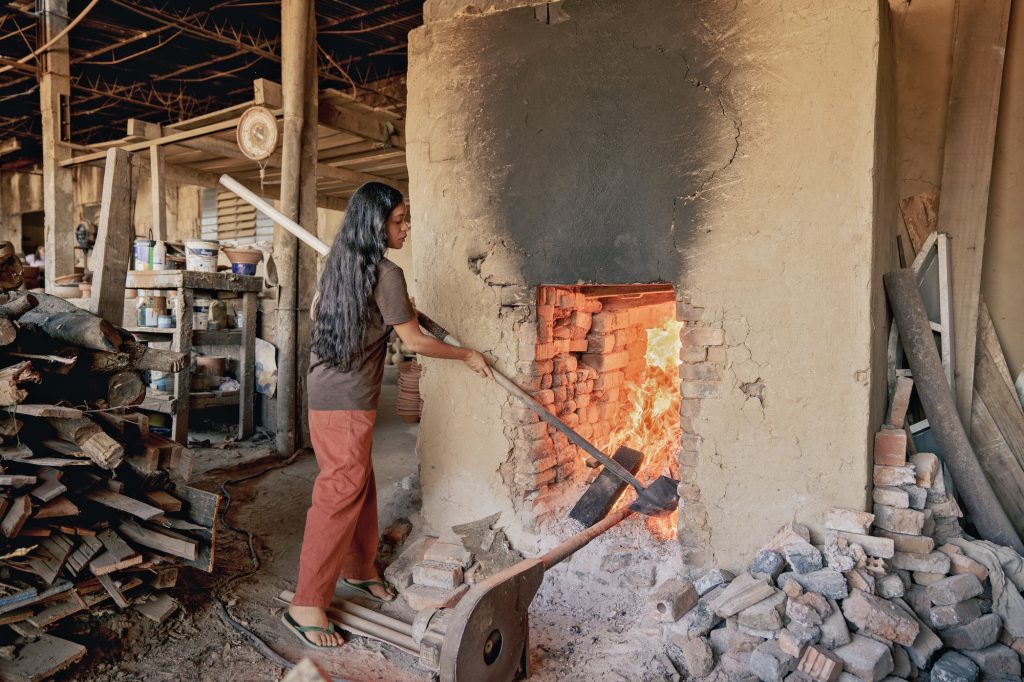
Sallisa Rosa working on Topography of Memory, 2023. Courtesy of the artist and Audemars Piguet.
Adding to this ascendant past few years, now Rosa is making her U.S. solo debut with Topography of Memory, a captivating installation of 100 ceramic vessels on view at the Collins Park Rotunda in Miami Beach. The project was commissioned by Audemars Piguet Contemporary and guest-curated by Thiago de Paula Souza, a Brazilian curator who introduced Sallisa to the commission. Opening today, Topography of Memory is on view through December 17, 2023, coinciding with Art Basel Miami Beach. The artist’s work will also be on view at the fair with São Paulo gallery A Gentil Carioca, which is showcasing new ceramics and watercolors by the artist.
“I’ve been researching memory for the last two or three years. My grandma was diagnosed with Alzheimer’s and since then, I’ve been thinking a lot about way memory is stored,” she said on a call. Though her practice encompasses video, photography, and performance, clay is her primary medium here.
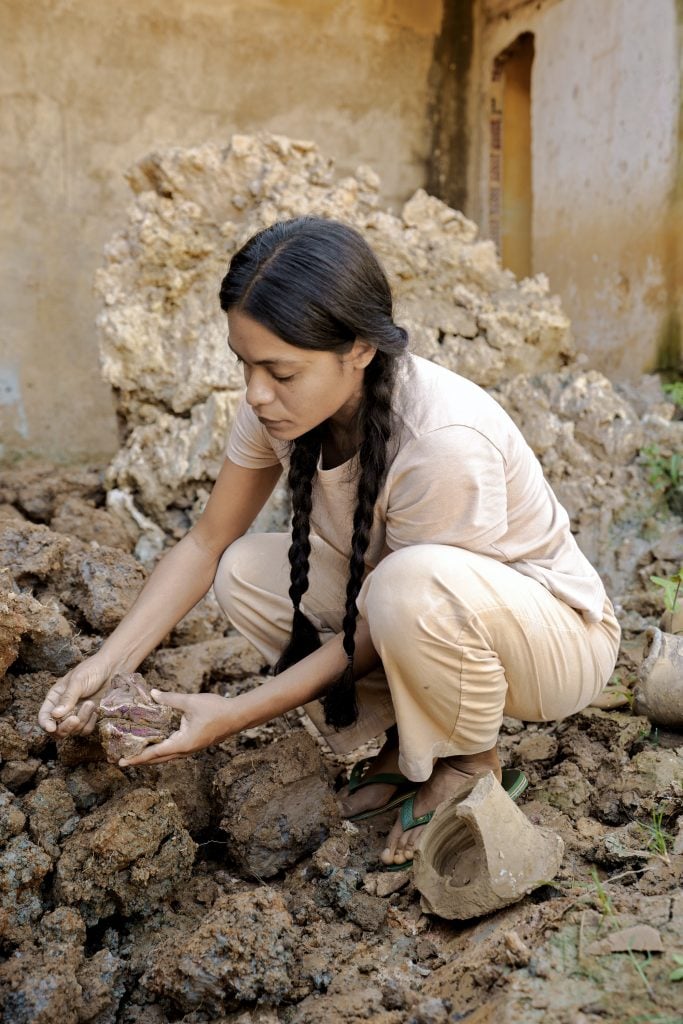
Sallisa Rosa working on Topography of Memory, 2023. Courtesy of the artist and Audemars Piguet.
To create the works, Rosa enlisted friends and volunteers to help her gather clay from areas surrounding Rio. For Rosa, working with collected clay is essential. “The earth is a place of memory—our whole histories are stored in it,” she explained. “It’s very different when you work with collected clay. There’s a lot of information in this clay—rocks, organic materials, trash. This means it’s really hard to work with because it’s a living material.
There’s more risk, things may break because of it, but I also feel more comfortable knowing where it all comes from.” Involving her community is also essential. “This is a super Brazilian perspective, to bring in other people. When you invite other people to work with you it’s more challenging. You need to negotiate all the time and the work changes because of it.”
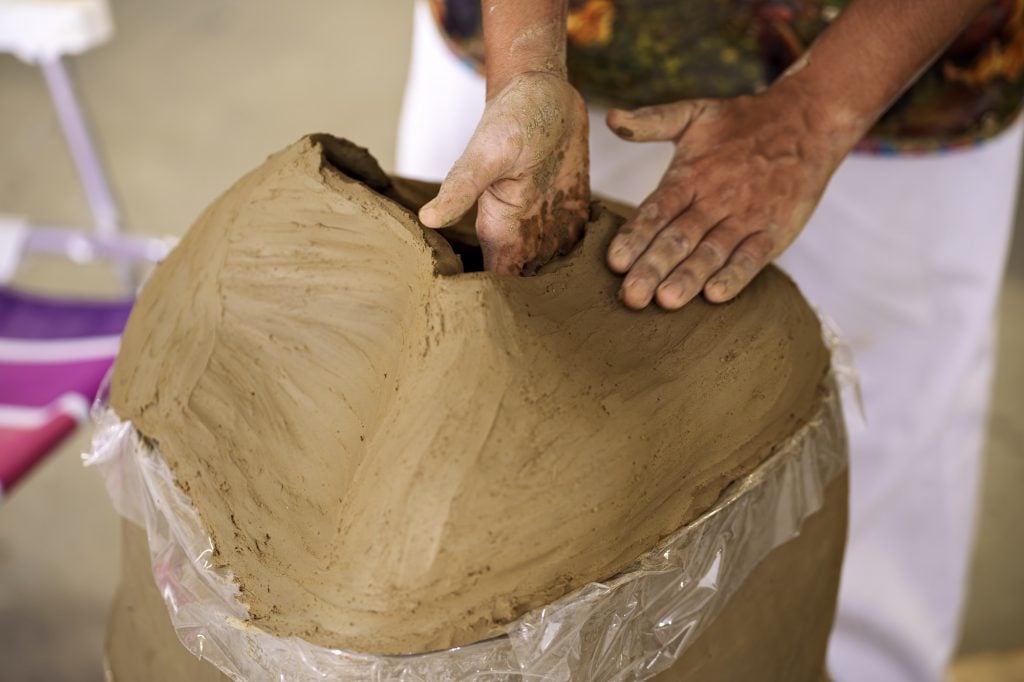
Sallisa Rosa working on Topography of Memory, 2023. Courtesy of the artist and Audemars Piguet.
This focus on process translated to the firing process as well. Each of the 100 sculptures in the installation was fired in an 800-degree (Celsius) kiln housed in an underground pit—a traditional approach that roots the works both to Rosa’s cultural history and to the earth itself.
Now in its final installation, Topography of Memory offers an immersive space with a grotto-like serenity. Round ceramic vessels line the ground like strange rocks or gourds while other vessels are shaped in stalagmite-like peaks. Overhead round spheres are suspended like planets. This transportive landscape is cast in an amber light and soft mist disperses throughout the installation, emphasizing the diffusive sensation of a world at once subterranean and cosmic.
For Rosa, Topography of Memory hints at the unknowable, the loss of memory. Like many Brazilians of her generation, the artist has struggled to piece together her family history and genealogy. As her grandmother’s memory fades with the progression of her disease, Rosa’s grasp on her family history has become even more fragmented. The act of gathering eroded earth and clay to create these works becomes a collective attempt at retrieving eroded memories themselves.
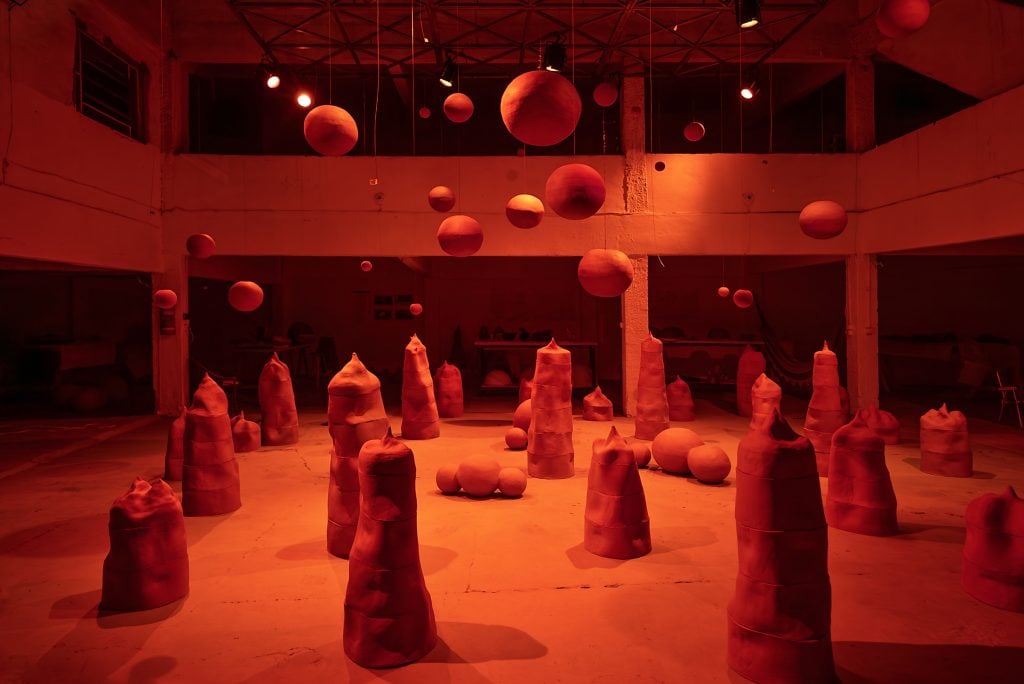
Sallisa Rosa, Topography of Memory (2023). Courtesy of the artist and Audemars Piguet.
“Archaeologists always give histories to ceramics,” the artist mused. “They kind of invent memories about the ceramics they find—‘People lived like this because of this pot.’ In Topography of Memory, I’m making an archaeology for the future. I’ve put a memory inside of each work in the installation and created a fictional landscape of meaning.”
Much of the strength of the work is its very adaptability, its malleability. Next year, the work will travel back to Brazil for an exhibition at the Pinacoteca de São Paulo. For Rosa, this back-and-forth journey between the Americas will become part of the work’s own memory.
“My grandma’s name is America. She was born on October 12, the day Columbus invaded America. For me the continents of America always have that connection to her” she said. “When she started to lose her memory, I felt, in a collective way, we started to lose our collective memory, our history. This is a way of beginning to remember.”